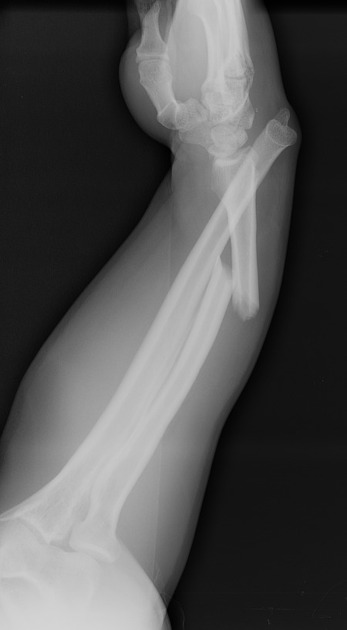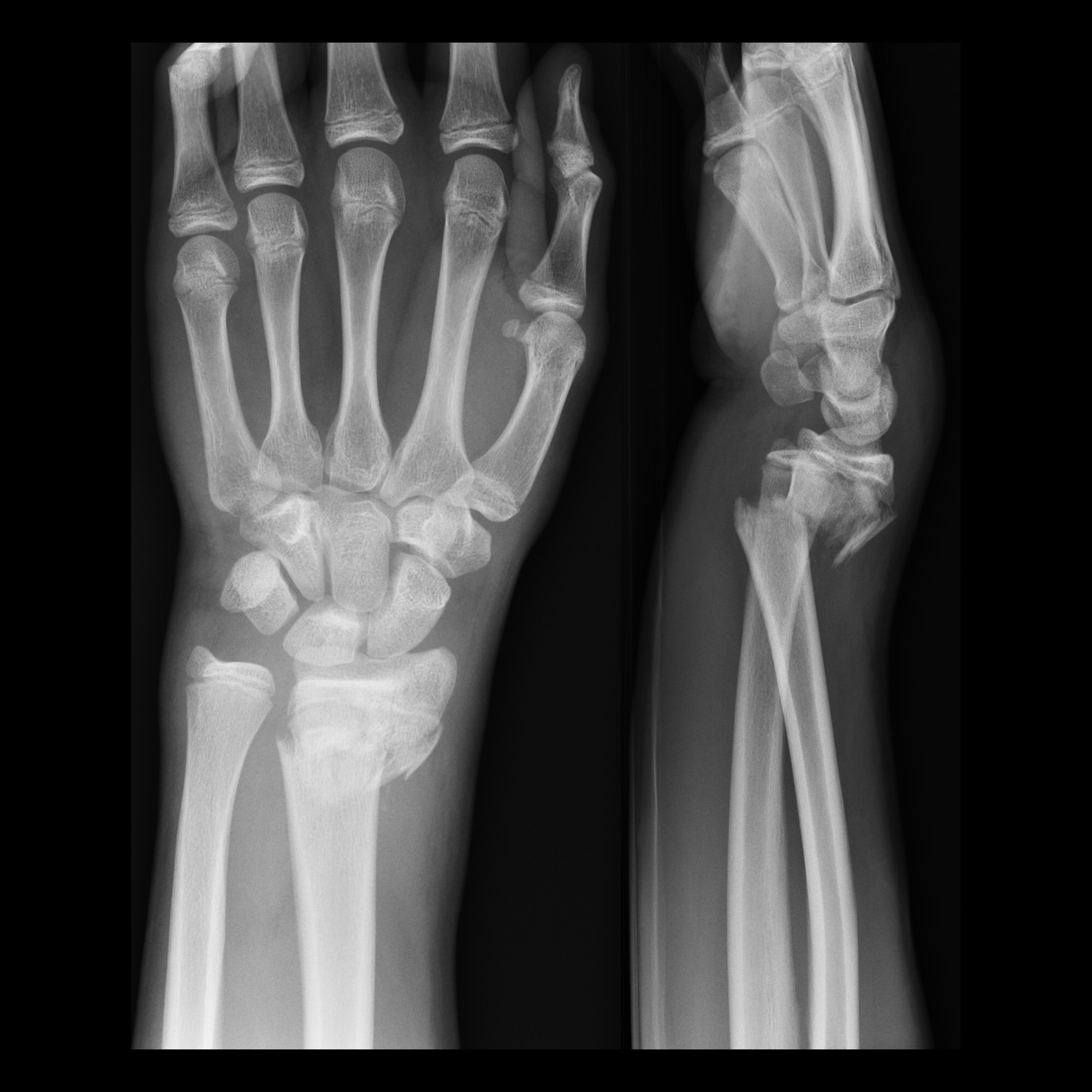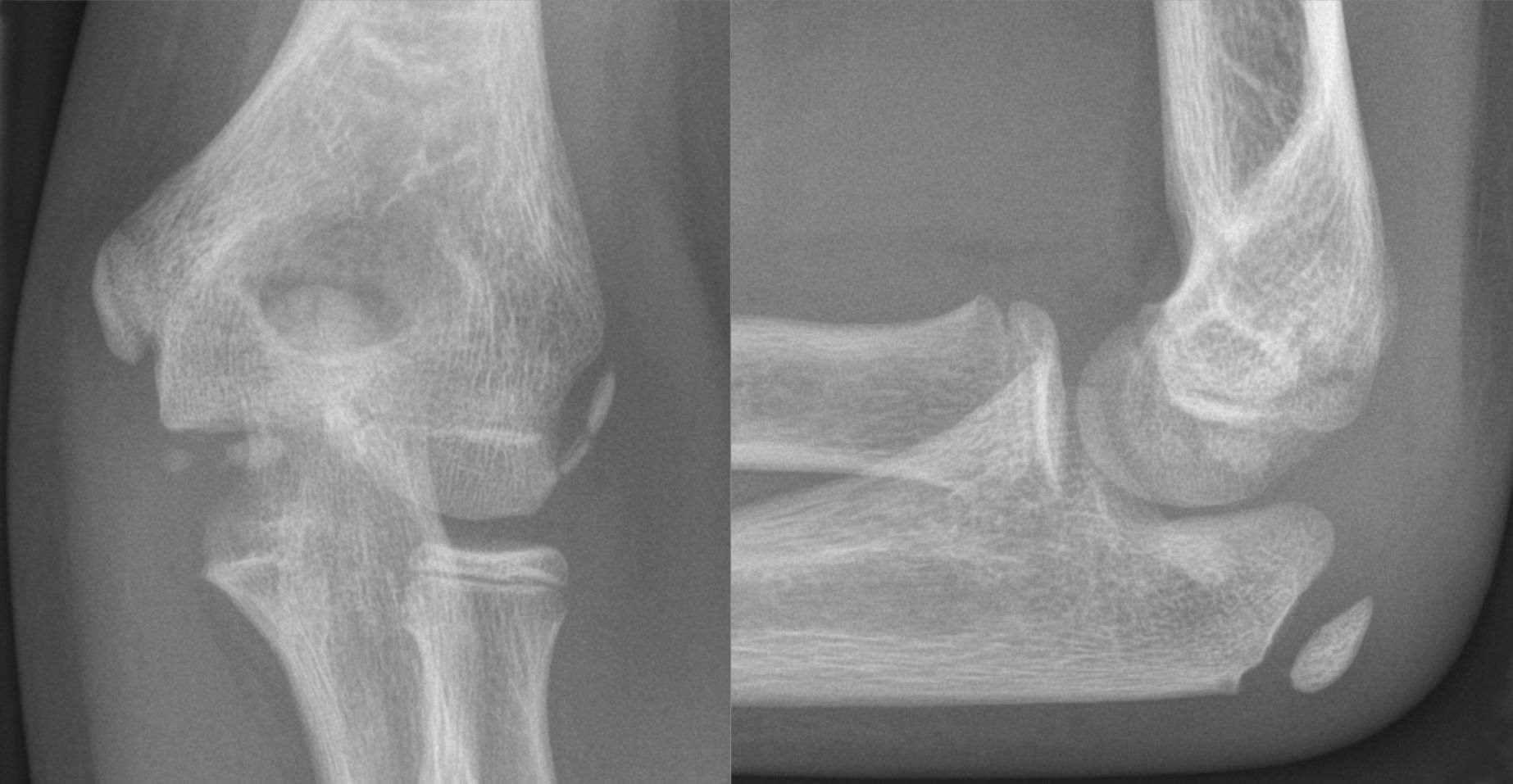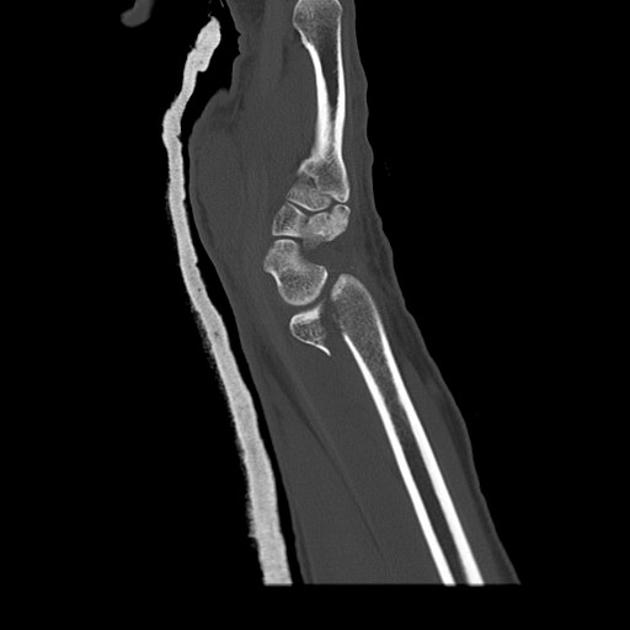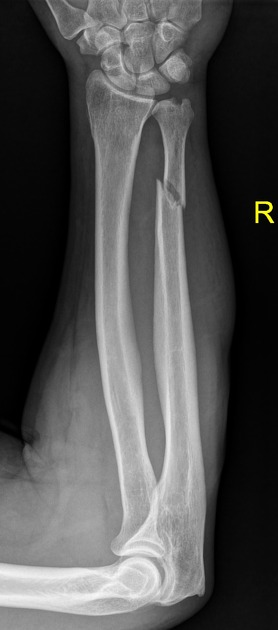Monteggia fracture

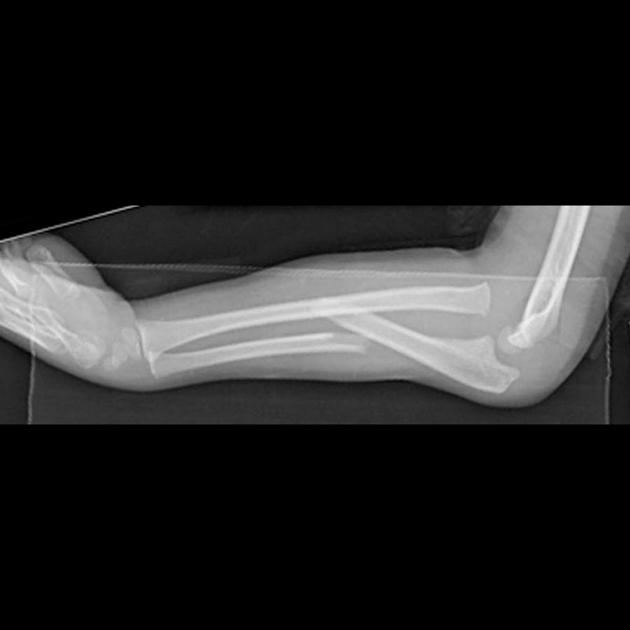



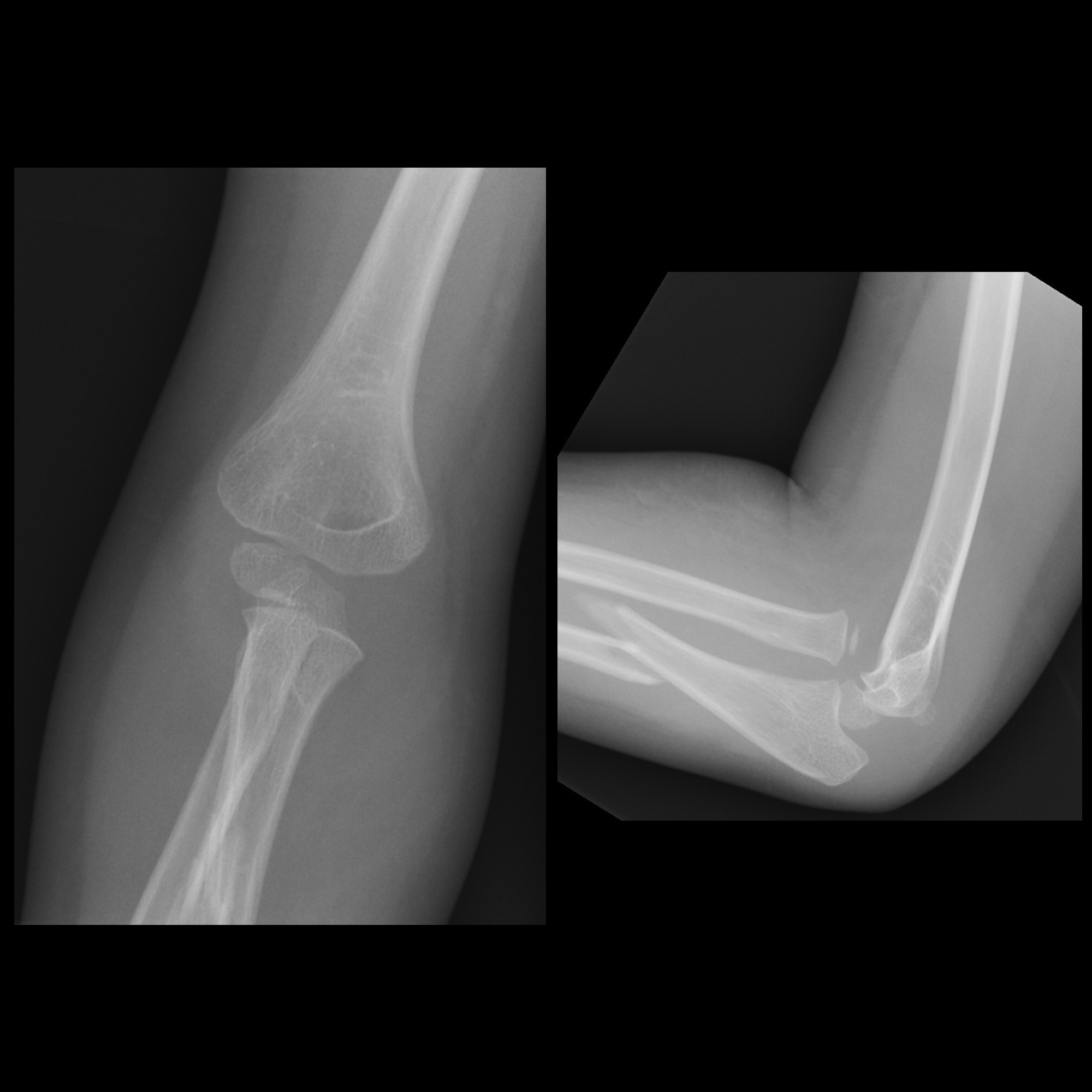
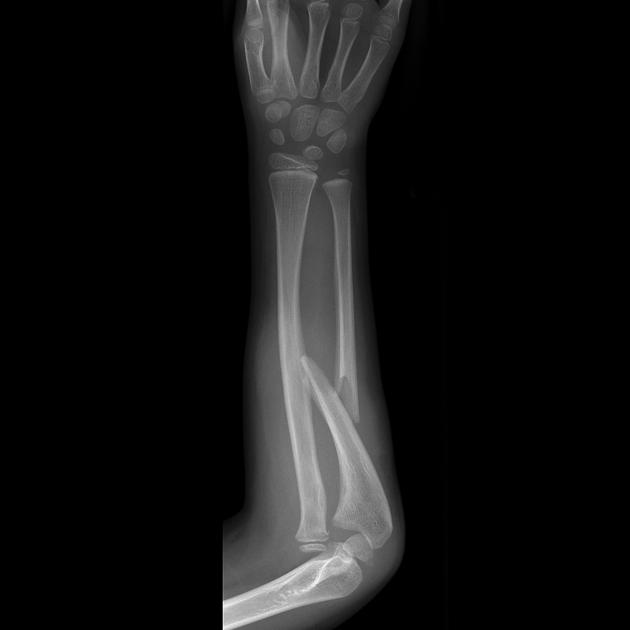
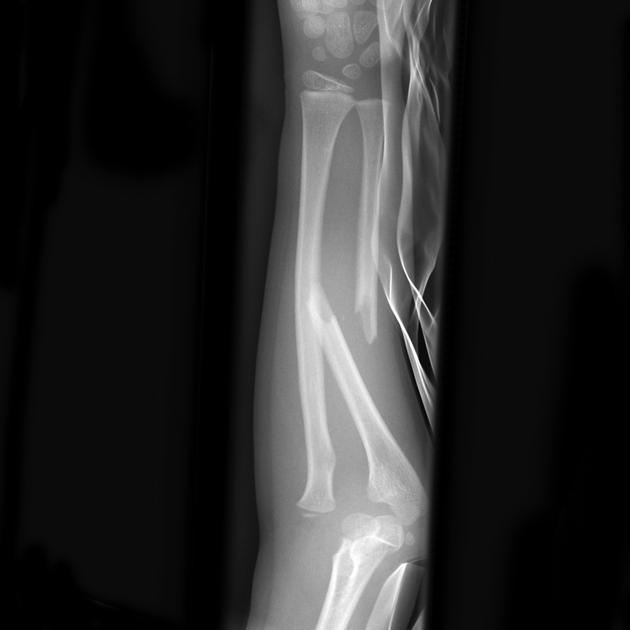
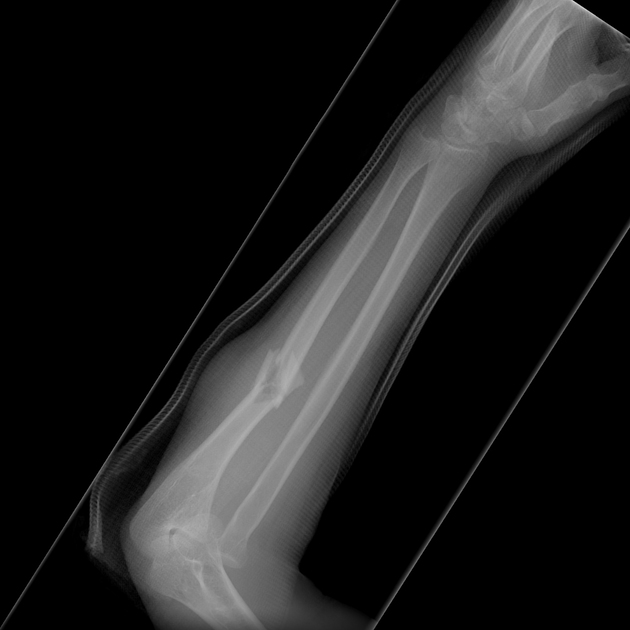
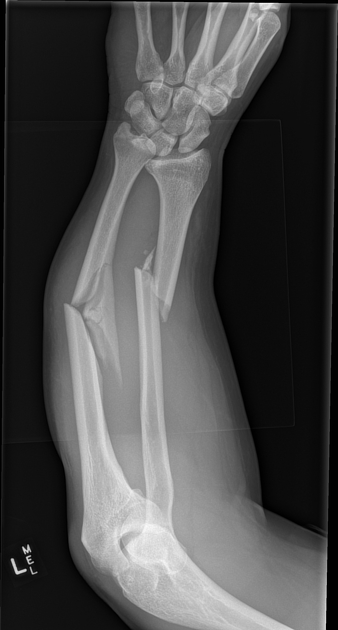
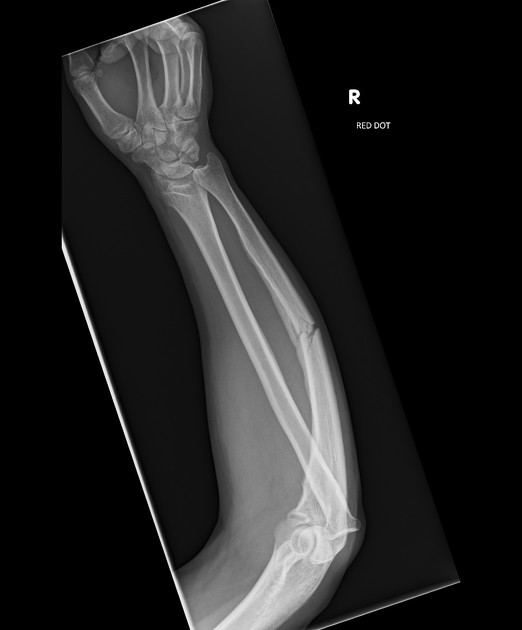
Monteggia fracture-dislocations consist of a fracture of the ulnar shaft with concomitant dislocation of the radial head. The ulnar fracture is usually obvious, whereas the radial head dislocation can be overlooked, with potentially serious functional and medico-legal ramifications.
Mechanism
Typically, Monteggia fracture-dislocations occur as the result of a fall onto an outstretched hand (FOOSH) .
The Bado classification is used to subdivide the fracture-dislocation into four types which all have different treatment options and prognoses and is based on the principle that the direction in which the apex of the ulnar fracture points is the same direction as the radial head dislocation . The direction of radial head dislocation depends on whether abduction or adduction forces were applied during the fall .
As is usually the case, in everyday practice, describing the fracture-dislocation is far more important than remembering the grade.
Epidemiology
Monteggia fractures occur mostly in children (peak incidence at ages 4-10 years) and rarely in adults.
Radiographic features
When a forearm fracture is identified, dedicated imaging of both the elbow and the wrist is important and good quality AP and lateral views are essential. Provided that films of adequate quality are obtained, the ulnar fracture is usually obvious and the radial head dislocation should be readily identifiable.
Regarding pediatric patients, one should take into account:
- the age-dependent normal appearance of the elbow centers of ossification, which could mimic a fracture to the inexperienced eye
- that up to 24% of cases are associated with a distal radial fracture
- that an apparently isolated ulnar plastic/greenstick fracture may actually represent a Monteggia-equivalent lesion with spontaneous radial head reduction
Treatment and prognosis
All four types of Monteggia fracture-dislocations (see Bado classification) are treated with open reduction and internal fixation of the ulna and radius in type 4. Usually anatomical reduction of the ulna allows for a closed reduction of the radial head. Types I, III, IV are cast at 110 degrees of flexion, whereas type II is cast at 70 degrees of flexion .
In the pediatric population, treatment depends on the type of ulnar fracture:
- bowing/greenstick fracture: closed reduction of the ulnar bow and casting. If reduction of the radial head is not possible open osteotomy and fixation of the ulna may be required
- complete transverse/short oblique fracture: closed reduction and intramedullary fixation
- long oblique/comminuted fracture: open reduction and internal fixation
The prognosis is significantly decreased by delayed diagnosis and treatment.
History and etymology
It is named after Giovanni Battista Monteggia, Italian surgeon (1762-1815), who first described what is now known as the Bado type I fracture in 1814 .
See also
Siehe auch:
- Frakturen mit Eigennamen
- Chauffeur-Fraktur
- Galeazzi-Fraktur
- Colles-Fraktur
- Barton Fraktur
- Ossifikationszentren Ellenbogen
- Radiusköpfchenluxation
- distale Radiusfraktur
- fracture-dislocations of the radius and ulna
- Frakturen der oberen Extremitäten
- Smith-Fraktur
- Bado classification
- Essex-Lopresti fracture
- Schlagstockfraktur
und weiter:

 Assoziationen und Differentialdiagnosen zu Monteggia-Fraktur:
Assoziationen und Differentialdiagnosen zu Monteggia-Fraktur:
